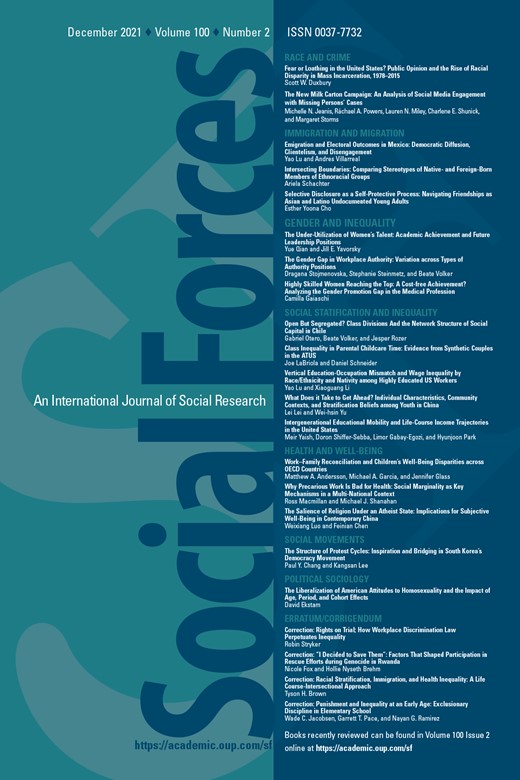-
Views
-
Cite
Cite
Becky Pettit, Review of “Motherlands: How States Push Mothers Out of Employment”, Social Forces, Volume 100, Issue 2, December 2021, Page e19, https://doi.org/10.1093/sf/soab073
Close - Share Icon Share
Extract
Much comparative, cross-national research has drawn attention to how welfare state provisions and features of labor markets shape mothers’ engagement in and attachment to the labor force especially when children are young, yet little research has examined variability across states within the USA. How do states support mothers to work in the paid labor force? Or, alternatively, how do states push mothers out of employment? And when and under what circumstances are the labor market fortunes of mothers aligned with the labor market fortunes of women? These are the central questions that motivate Motherlands: How States Push Mothers Out of Employment.
Drawing on data from 50 states and the District of Columbia, Leah Ruppanner shows that policies and practices that concentrate the care of children in the home and in the hands of women undermine mothers’ employment while those that collectivize the provision and cost of childrearing facilitate the employment of mothers. Accessible and affordable child care, as well as longer school days, are consistently associated with higher rates of mothers’ employment. Hawaii and the District of Columbia provide the most comprehensive supports for working mothers. And, as Ruppanner frequently points out, states not known for gender progressive politics—like Nebraska—do a comparatively good job of incorporating mothers in the paid workforce while those that celebrate women’s empowerment—like California—have much lower rates of mothers’ employment.



